Lawn care and maintenance guide
Lawn care and maintenance guide
Introduction
To keep a lawn looking its best, certain tasks need to be carried out throughout the year. But with the right lawn care products and a little effort, having a healthy-looking lawn is easy.
This guide tells you everything you need to know about lawn care and maintenance. First, it covers what lawn care is and lawn care tips to make your grass green. Next, we give you some lawn treatment guidance, including how to choose lawn seed and fertilising a lawn. And we run through what lawn maintenance tasks need to be carried out by season. Finally, we highlight what to consider when buying lawn care and answer some frequently asked questions.
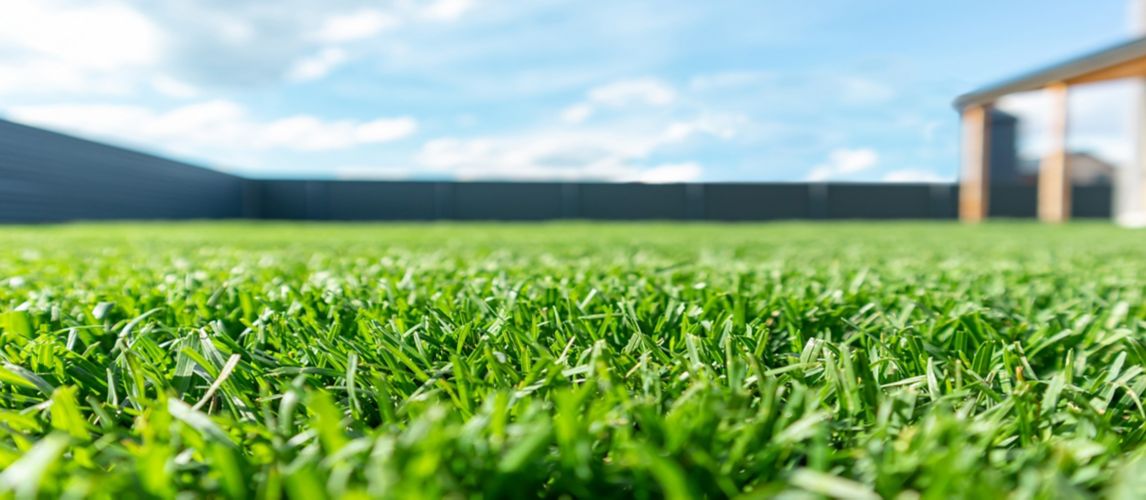
What is Lawn Care?
Lawn care is the general name given to the tasks carried out to maintain a healthy lawn throughout the year. The tasks typically include mowing, watering, weeding, feeding, scarifying and aerating. And it’s essential to do the right jobs at the right time of year to keep the grass healthy.
How to Make Your Grass Green
Having a lush green lawn is every homeowner’s dream. But getting one takes a bit of work and commitment. However, a green lawn can be easily achieved with the right lawn care tools, fertilisers and treatments.
This section covers everything you need to do to make your grass green. We look at each lawn maintenance task and provide lawn care tips to help you get the best result.
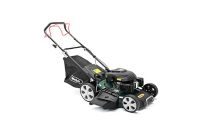
Regular mowing
Grass should be mowed regularly, as soon as it starts growing. It encourages the roots to spread, which helps fill out gaps and stop weeds from growing.
Top mowing tips:
- Choose the right lawn mower for the type and size of lawn and cut you want. Read our guide to garden power tools for information about choosing the right lawn mower.
- Cut the lawn once a week in summer and fortnightly in spring, autumn and winter.
- Set the mower blades high for the first few mows in spring, then gradually reduce the height.
- Ensure the mower blades are kept sharp. A blunt blade will tear and damage the grass.
- In summer, raise the cutting height to 5-10cm to help it retain moisture in dry weather, so it doesn’t go brown.
- Also, raise the cutting height in autumn as longer grass is less vulnerable to frost damage.
- Regularly change your mowing direction to prevent the soil from getting compacted and the grass leaning in the direction it’s mowed.
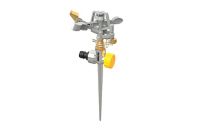
Watering the lawn
Water is an essential nutrient for grass to survive. However, it’s tougher than you may think. While a new lawn needs watering regularly throughout its first season, an established lawn can survive dry summers well without water unless there is an extreme drought. So, even if an un-watered lawn goes brown in summer, it will recover. However, to keep the grass green and healthy all year, you’ll need to water it. Read more here for information about garden watering systems.
Top watering tips:
- If possible, use rainwater collected in a water butt or ‘grey’ wastewater (such as bath and washing up water).
- Always water new lawns, but don’t overwater. Otherwise, the roots will establish poorly.
- Always water early in the morning or late in the evening to prevent the grass from getting scorched in the sun.
- Alternatively, use a sprinkler connected to a timer to water overnight. Then, all the water is absorbed rather than evaporating in the heat.
- Water for about half an hour each time.
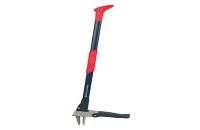
Weeding the lawn
Weeds can quickly take over a lawn if they’re not dealt with. And some weeds, like dandelions and plantains, have large flat leaves that smother grass and stop it from growing. So, it’s best to get rid of them as soon as possible.
Top weeding tips:
- If there are only a few weeds, pull them up by hand.
- Dandelions have deep roots, so use a deep root weeding tool to get rid of them.
- For shallow-rooted weeds, such as buttercups and clover, rake over them to lift them up before mowing. Mowing will slowly weaken them over time, so they eventually die off.
- If weeds are widespread, treat the lawn with weed killer. But ensure you only use lawn weed killer, as any other type will kill the grass too.
- Always follow weed killer instructions carefully, as applying the wrong amount can do more harm than good.
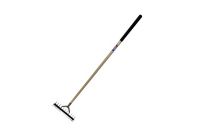
When to scarify the lawn
Scarifying is a process where you rake over a lawn to remove thatch (dead grass and other debris) and moss using a scarifying tool. Thatch and moss starve the grass of moisture, light, and nutrients, so unsightly bald and yellow patches will appear on the lawn if it isn't removed.
How to scarify a lawn:
- Scarifying should be carried out twice per year. Once in spring to enable the grass to thrive during the growing season. And then again, in autumn to prepare it for winter.
- Only scarify a dry lawn. Don’t scarify a lawn when it’s wet.
- The lawn will look brown for a week or so after scarifying, but it will soon grow green again.
- A scarifier with metal blades is best for removing thatch as the blades cut out the thatch.
- A scarifier with wire tines is best for removing moss. Moss isn’t rooted, so wire tines pull it away from the ground.
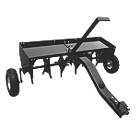
Aerating the lawn
Over the year, the soil in lawns gets compacted, leading to poor drainage, lack of air getting to the grass roots, a build-up of thatch and an increased risk of lawn disease. Aerating is the process of spiking small holes in the grass to allow airflow and improve drainage, which enriches the health of the grass.
Top aerating tips:
- Aerate the lawn in spring and autumn, or at any time it gets compacted.
- For large lawns, use a specialist multi-prong aerator. It’s a tool that usually consists of a roller with spikes, at the end of a long handle.
- For small lawns, use a garden fork.
- For any size lawn, you can also use lawn aerator shoes. Strap them to your feet over shoes and walk up and down the lawn.
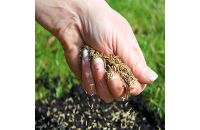
Feeding the lawn
Like any living thing, grass needs plenty of nutrients to maintain health. So, to keep a lawn looking lush and green, it needs to be fed regularly.
Top feeding tips:
- Apply lawn feed twice per year – in spring and midsummer/autumn.
- For a fast job and to ensure an even spread of lawn feed, use a wheeled lawn feeder.
- Apply lawn feed when rain is forecast. This ensures it gets washed down into the roots and prevents the lawn feed from burning the grass blades.
- If it doesn’t rain, water the grass after applying the lawn feed.
- For best long-term results, use an organic lawn feed rather than a chemical alternative.
- For a natural fertiliser, leave cut grass on the lawn after mowing.
Lawn Treatment Guidance
This section looks at the different grass treatment products available, specifically lawn seed and fertiliser. It covers things to think about before using them and the best way to use them.
Choosing lawn seed
There are many different types of lawn seed available. The one you choose will depend on the kind of lawn needed, the growing conditions and whether you are planting a new lawn or repairing a patch in an existing lawn.
For example, there are lawn seeds for new lawns that produce ornamental or fine lawns, play lawns or tough lawns. Then some seeds are tolerant to drought and disease, shady areas or clay soils. You can also buy seeds based on the soil's pH level (use a pH tester to check this).
For patch repair, choose a triple-action patch repair seed that combines seed, fertiliser and coir. Coir is a natural fibre that surrounds the seeds, supplies them with nutrients and absorbs water to keep them moist.
There are also multi-purpose lawn seeds that contain a blend of hardwearing seed varieties. They’re ideal for new lawns, overseeding worn grass and patch repair.
To lay lawn seed effectively, first prepare the ground. If there are weeds, use a glyphosate weed killer to kill everything first. Then skim off the existing turf, rake and pick out stones and root debris and double dig or rotovate the soil to a depth of 6-8 inches. Next, rake it smooth and ‘tread’ it – walk up and down using your heels to make the soil firm and flat. Then rake the surface to open it up and water it heavily a few days before seeding.
Lawn seed can be spread by hand, but it’s best to use a grass seed spreader to ensure even distribution. Check the lawn seed instructions to get the right coverage per square metre. Lightly water with a very fine spray once or twice a day for the first two weeks. Then reduce watering to once a day or every other day (depending on how dry the weather is) for the second two weeks. After that, water once a week.
For best results, lawn seed should be planted between April and September.
Fertilising the lawn
To keep a lawn healthy, it should be fed with lawn fertiliser (also called lawn feed) twice per year. Once in spring, and again in midsummer/autumn. In spring, choose a fertiliser with high nitrogen content, which helps kick-start new growth. And in autumn, choose one with high phosphorus and potassium content, which helps to toughen the grass up for winter.
Fertilisers can come as a liquid, which you spread using a watering can or sprayer. Or it can come in granules which can be applied by hand, or, for large lawns, using a wheeled spreader.
Some fertilisers are combined with a weedkiller, tackling two jobs in one. But you need to spread it carefully, as the weedkiller will kill plants in borders too.
Lawn Care by Season
Once a lawn is established, the best way to maintain its health is to keep up with specific tasks throughout the year. Here's a list of the tasks that need to be completed by season:
Spring grass care tips
- Flatten lifted turf with a roller
- Brush worm casts away with a broom when the lawn is dry
- Mow the grass fortnightly as soon as it starts growing, starting with the blade high for the first few cuts
- Scarify the grass to remove thatch and moss
- Aerate the lawn to improve airflow and drainage
- Reseed bare patches of lawn and water the patch in dry weather
- Apply a fertiliser with high nitrogen content
- Apply weed killer as soon as weeds start to grow
Summer lawn tips
- Mow the grass weekly (even if it doesn’t grow much in dry spells). Raise the cutting height to 5-10cm in very dry weather to help the grass retain moisture
- If you decide to water, do it for half an hour in the morning or evening to avoid evaporation
Autumn lawn care tips
- Mow the grass fortnightly. Raise the cutting height as long grass is less vulnerable to frost
- Scarify the grass to remove thatch and moss
- Aerate the lawn to improve airflow and drainage
- Apply a fertiliser with high phosphorus and potassium content
- Regularly remove fallen leaves from the grass as a build-up will kill the grass
- Reseed bare patches of lawn and water the patch in dry weather
Winter lawn tips
- Give the lawn a final cut in November, ensuring the mower blades are sharp so they don’t tear the lawn
- Regularly remove fallen leaves from the grass as a build-up will kill the grass
- Avoid treading on the grass in frosty weather, as that will damage it. If necessary, lay boards over any parts you need to walk on
What to Consider When Buying Lawn Care
Following the guidelines above will give you the best result. But here are a few more things to consider:
-
Edging the lawn - To keep a lawn looking neat, ensure the edges are kept trim and sharp. For best results, recut the edges every spring using a half-moon edger tool that slices into the ground. For a straight edge, place a plank of wood on the ground to use as a guide. Or do the same with a piece of rope for a curved edge. Then, throughout the year after mowing, trim any long grass the mower couldn’t reach using garden shears or a grass trimmer.
-
Lawn pests - Lawn pests love a healthy lawn, but the lawn doesn't love them. So, they should be dealt with as soon as you notice them. Ants can be killed by hosing their nest or by using ant killer. Moles can be trapped, smoked out or scared away using a sonic mole repellent. Then there are pests that feed on grass roots, such as leather jackets and chafer grubs. Unfortunately, there is no pesticide available to get rid of these pests. So, your best defence is scarification, aeration and overseeding, which will help reduce the population and repair any damage they've caused to the lawn.
-
Raking the lawn - Raking lawns in spring and autumn removes moss and dead leaves, enabling the lawn to get light, nutrients and water. Rakes can be used to sweep up grass cuttings after mowing if the mower doesn’t have a grass collection box. And they can also help to loosen matted grass clumps. For best results, use a spring tine rake and pull it upwards to lift debris from the grass rather than using a dragging motion.
-
Soil and lawn top dressing - Top dressing a lawn is a technique used to level lawns that have humps and hollows. It involves applying a mixture of sieved soil, compost and sharp sand to the lawn’s surface. Buy ready-made top dressing (also called lawn conditioner or turf dressing) or mix your own using equal parts of the three materials. Then, simply rake or brush the mixture on top of the lawn to a depth of no more than 1cm.
